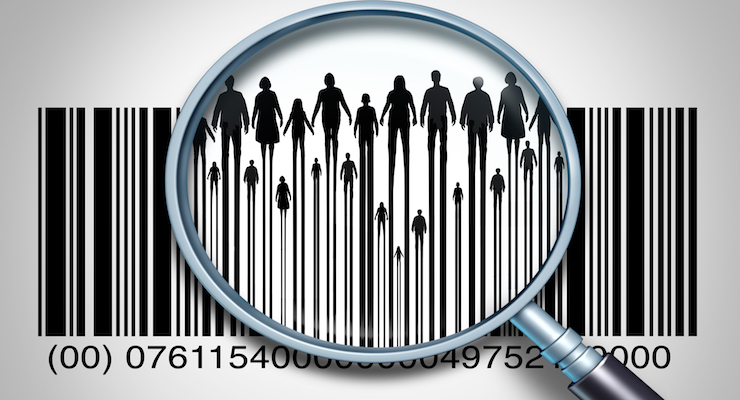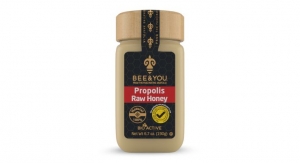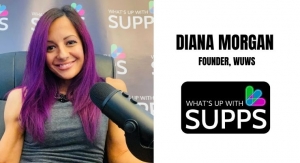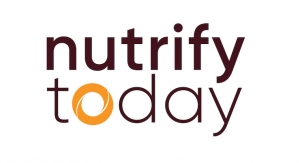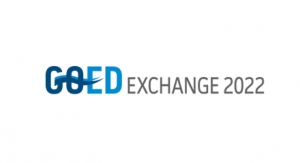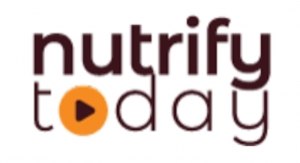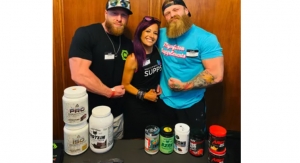By Mike Montemarano, Associate Editor09.29.20
In the year 2020, companies have likely never leaned more heavily on their consumer research departments amid rapidly shifting demands spawning from the COVID-19 crisis.
Food, beverages and dietary supplement brands today can tap into new consumer research methodologies, along with traditional approaches, to garner meaningful insights.
Recently, the heads of consumer research teams at legacy brands Kraft Heinz, PepsiCo, and Unilever discussed the approaches they are taking to tapping into the minds of consumers in crisis. During a webinar hosted by consumer research company Suzy, the experts offered what aspects of this year they believe will permanently change how consumer research is conducted.
2020 Accelerates New Methodologies
According to all three speakers, the events of 2020 have forced companies to rapidly deploy some less conventional market research tactics, in part due to limitations posed by social distancing, but also due to the rapid shifts in consumer behaviors.
Likewise, the volatility placed researchers in more of an administrative role than ever before, an adjustment believed to be permanent. Long-term, qualitative information needs to be supplemented with fast-paced data science on a week-by-week basis, and with limited resources, the consumer researchers said.
“Many of these changes were happening already,” said Elliot Roazen of Unilever. “Basically, about five years’ worth of change in consumer preferences has happened in a matter of five months—where, before, the transition to e-commerce, and novel preferences in CPG were happening piecemeal.”
“We now have a seat at the table for business decisions, which is a position we’ve been pushing for, and yearning for. Our day has arrived,” said Nick Graham, vice president of insights and analytics at PepsiCo. “On the other side, it’s more stressful than ever […] a lot of us had gotten used to a certain pace of change. There’s no more room for forecasting models based on historical data. There’s no certainty or stability about what the future holds […] Big data, speed, agility, and the hybridization of qualitative and quantitative research is going to accelerate massively to respond to this environment.”
“We don’t have the luxury of tried and true methods anymore,” Graham continued. “Once you get into using new research tools, you realize that there’s less quality being traded off than anticipated, and certain barriers to the tools that we already had have been removed.”
Additionally, historical expertise doesn’t hold the same impact that it used to, due to the isolated nature of commerce today, and the ability to record and access third party information on digital sales.
“The categories we operated in the past involved relying on experts who knew consumers very well,” Graham said. “No one actually believes they know the consumer anymore. It’s a bit hackey, but we’re not all in the same boat. We’re all sitting at home, and we don’t know how the millions of people confined to their homes without a job are feeling right now.”
Democratizing the Process
Another observation discussed among the expert panel was the notion that tapping into markets will likely become a more democratized process, based on the fact that several firms scrambled to become a reliable hub of insights surrounding COVID-19 that people can access easily.
“We’re seeing different levels of ownership with consumer information; it used to be held more tightly,” Kim Spaid, head of consumer insights for Kraft Heinz, said. “We say we’re consumer-obsessed, but for that to be true, you have to democratize how you respond to their input. That means tools, accessible trend platforms, and sharing storied experiences interpreted from the data.”
Likewise, part of democratizing consumer research involves promoting market literacy across all departments in any given company. That effort would allow a team to respond to markets more cohesively.
“I drowned in the first few weeks, because everyone had a COVID-19 tracker,” Graham said. “We’ve learned to synthesize data into themes, like how consumers are feeling about the upcoming holidays, or how they’re approaching hygiene, to make it more digestible and to ensure we’re all contributing to discussions.”
“Before, people had to be literate enough to interface with the analytics team, but now people outside of consumer research may have to get their hands dirty to a certain extent, based on what comes out of this,” Roazen said.
While, certainly, a new place for rapidly-paced data collection has been carved out by the crisis, it isn’t a panacea to the new dynamics of day-to-day living, Graham warned.
“The constraints are off, and we’re open to a whole lot of new paths and opportunities, but not everything can or should be done in a speedy way through every new platform. When you’re really trying to understand the deep motivations and drivers of human behavior, it’s not going to get done overnight. But, it’s interesting to see what we can automate or make leaner, so that we can drive our literal human resources toward things like storytelling, or interpreting behavioral patterns.”
Generally speaking, the climate of consumer research affords teams a greater flexibility to employ new methodologies, and companies tend to place a greater stake on the data they acquire and how it is interpreted.
“Today, you can put resources towards what might be risky, but might also work. Or you could put resources toward methods that were proven to work in a much different past,” Roazen said. “I don’t think there’s ever been a better opportunity for bravery and the willingness to challenge our orthodoxy—pushing back against views that feel outdated, or methodologies that might not reveal anything new. Evidence from the last six months should encourage us.”
Food, beverages and dietary supplement brands today can tap into new consumer research methodologies, along with traditional approaches, to garner meaningful insights.
Recently, the heads of consumer research teams at legacy brands Kraft Heinz, PepsiCo, and Unilever discussed the approaches they are taking to tapping into the minds of consumers in crisis. During a webinar hosted by consumer research company Suzy, the experts offered what aspects of this year they believe will permanently change how consumer research is conducted.
2020 Accelerates New Methodologies
According to all three speakers, the events of 2020 have forced companies to rapidly deploy some less conventional market research tactics, in part due to limitations posed by social distancing, but also due to the rapid shifts in consumer behaviors.
Likewise, the volatility placed researchers in more of an administrative role than ever before, an adjustment believed to be permanent. Long-term, qualitative information needs to be supplemented with fast-paced data science on a week-by-week basis, and with limited resources, the consumer researchers said.
“Many of these changes were happening already,” said Elliot Roazen of Unilever. “Basically, about five years’ worth of change in consumer preferences has happened in a matter of five months—where, before, the transition to e-commerce, and novel preferences in CPG were happening piecemeal.”
“We now have a seat at the table for business decisions, which is a position we’ve been pushing for, and yearning for. Our day has arrived,” said Nick Graham, vice president of insights and analytics at PepsiCo. “On the other side, it’s more stressful than ever […] a lot of us had gotten used to a certain pace of change. There’s no more room for forecasting models based on historical data. There’s no certainty or stability about what the future holds […] Big data, speed, agility, and the hybridization of qualitative and quantitative research is going to accelerate massively to respond to this environment.”
“We don’t have the luxury of tried and true methods anymore,” Graham continued. “Once you get into using new research tools, you realize that there’s less quality being traded off than anticipated, and certain barriers to the tools that we already had have been removed.”
Additionally, historical expertise doesn’t hold the same impact that it used to, due to the isolated nature of commerce today, and the ability to record and access third party information on digital sales.
“The categories we operated in the past involved relying on experts who knew consumers very well,” Graham said. “No one actually believes they know the consumer anymore. It’s a bit hackey, but we’re not all in the same boat. We’re all sitting at home, and we don’t know how the millions of people confined to their homes without a job are feeling right now.”
Democratizing the Process
Another observation discussed among the expert panel was the notion that tapping into markets will likely become a more democratized process, based on the fact that several firms scrambled to become a reliable hub of insights surrounding COVID-19 that people can access easily.
“We’re seeing different levels of ownership with consumer information; it used to be held more tightly,” Kim Spaid, head of consumer insights for Kraft Heinz, said. “We say we’re consumer-obsessed, but for that to be true, you have to democratize how you respond to their input. That means tools, accessible trend platforms, and sharing storied experiences interpreted from the data.”
Likewise, part of democratizing consumer research involves promoting market literacy across all departments in any given company. That effort would allow a team to respond to markets more cohesively.
“I drowned in the first few weeks, because everyone had a COVID-19 tracker,” Graham said. “We’ve learned to synthesize data into themes, like how consumers are feeling about the upcoming holidays, or how they’re approaching hygiene, to make it more digestible and to ensure we’re all contributing to discussions.”
“Before, people had to be literate enough to interface with the analytics team, but now people outside of consumer research may have to get their hands dirty to a certain extent, based on what comes out of this,” Roazen said.
While, certainly, a new place for rapidly-paced data collection has been carved out by the crisis, it isn’t a panacea to the new dynamics of day-to-day living, Graham warned.
“The constraints are off, and we’re open to a whole lot of new paths and opportunities, but not everything can or should be done in a speedy way through every new platform. When you’re really trying to understand the deep motivations and drivers of human behavior, it’s not going to get done overnight. But, it’s interesting to see what we can automate or make leaner, so that we can drive our literal human resources toward things like storytelling, or interpreting behavioral patterns.”
Generally speaking, the climate of consumer research affords teams a greater flexibility to employ new methodologies, and companies tend to place a greater stake on the data they acquire and how it is interpreted.
“Today, you can put resources towards what might be risky, but might also work. Or you could put resources toward methods that were proven to work in a much different past,” Roazen said. “I don’t think there’s ever been a better opportunity for bravery and the willingness to challenge our orthodoxy—pushing back against views that feel outdated, or methodologies that might not reveal anything new. Evidence from the last six months should encourage us.”

